Gnawa music, deeply rooted in the cultural heritage of the Gnawa people, is a traditional genre that holds immense significance in Morocco. The unique instruments used by Gnawa musicians, such as the guembri, along with rhythmic patterns called Krakeb, create a distinctive and captivating sound. Often associated with trance-like dances and rituals performed during festivals and celebrations, Gnawa music has gained international recognition for its powerful performances. In fact, it has been recognized as an intangible cultural heritage by UNESCO.
Tracing its roots back to West Africa, this kind of music was brought to Morocco by enslaved Africans. Over centuries, it has evolved through blending with Arab, Berber, and Sufi influences. Today, Gnawa music plays a vital role in Moroccan culture and identity. It serves as a form of spiritual expression and healing for both performers and audiences alike.
The Origins and Evolution of Gnawa
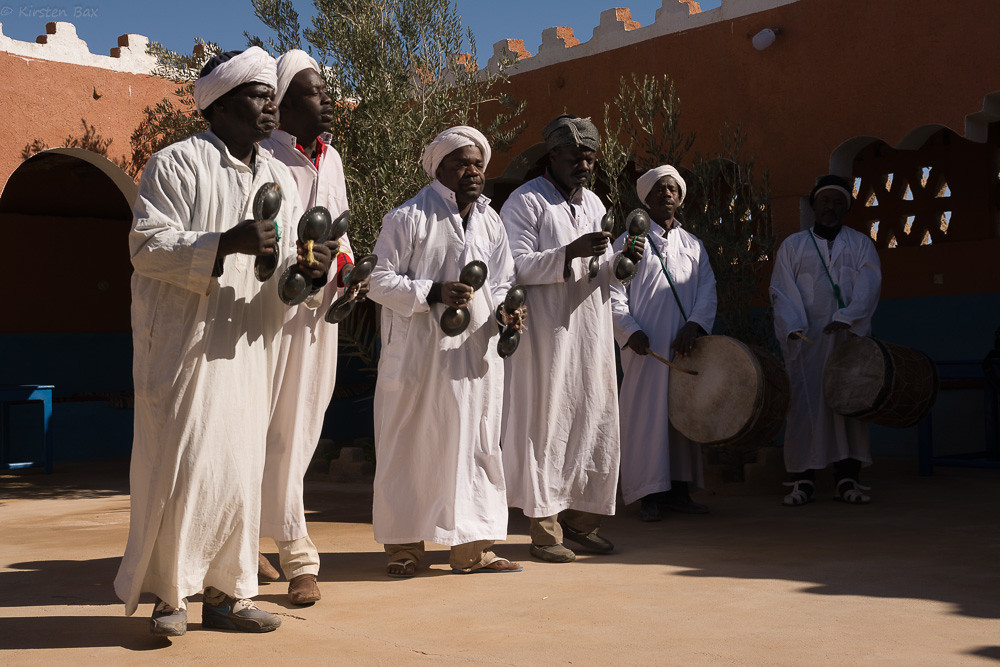
Gnawa music, deeply rooted in the cultural heritage of the Gnawas, an ethnic group in Morocco, has a fascinating history that spans centuries. This unique musical tradition has evolved over time, incorporating various influences and becoming an integral part of Morocco’s intangible cultural heritage.
The origins of Gnawa music can be traced back to the trans-Saharan slave trade when enslaved Africans brought their rich musical traditions to Morocco. These African roots are still evident in the music today, as Gnawa draws inspiration from ancient African spiritual practices. Elements of animism, ancestor worship, and trance rituals are woven into the music, creating a powerful and spiritual experience for both musicians and listeners.
Over the years, Gnawa music has evolved and embraced different influences. It has absorbed elements from other Moroccan musical traditions such as Hausa and Ganga. This blending of cultures has resulted in a unique sound that sets Gnawa apart from other genres.
Instruments play a crucial role in bringing this music to life. The guembri, a three-stringed lute-like instrument made from camel skin stretched over a wooden body, is central to Gnawa performances. Its deep resonating sound forms the foundation of the rhythmic patterns created by the musicians. Accompanying the Guembri are Krakeb, metal castanets that provide intricate percussive rhythms.
Gnawi musicians often perform during festivals and ceremonies where they engage in trance-like rituals while playing their instruments and dancing. These rituals aim to connect humans with the spirit world through ecstatic experiences facilitated by repetitive rhythms and chants. The original speech spoken during these ceremonies adds another layer of mysticism to the performances.
Today, Gnawa music enjoys widespread recognition both within Morocco and internationally. It has transcended its historical roots as a form of expression for enslaved Africans to become an important part of Moroccan culture embraced by people from all backgrounds.
One significant influence on Gnawa music is Sufism, a mystical branch of Islam. Many Gnawa practitioners also follow Sufi orders and incorporate their teachings into their performances. Sufi concepts such as spirituality, devotion, and transcendence are central to the themes explored in Gnawa music.
Gnawa musicians have gained prominence as celebrated artists who perform at festivals worldwide. Their captivating performances captivate audiences with their rhythmic intensity and spiritual depth. These musicians bring the ancient traditions of Gnawa into the modern world, preserving and promoting this unique musical heritage for future generations.
Musical Elements and Techniques of Gnawa
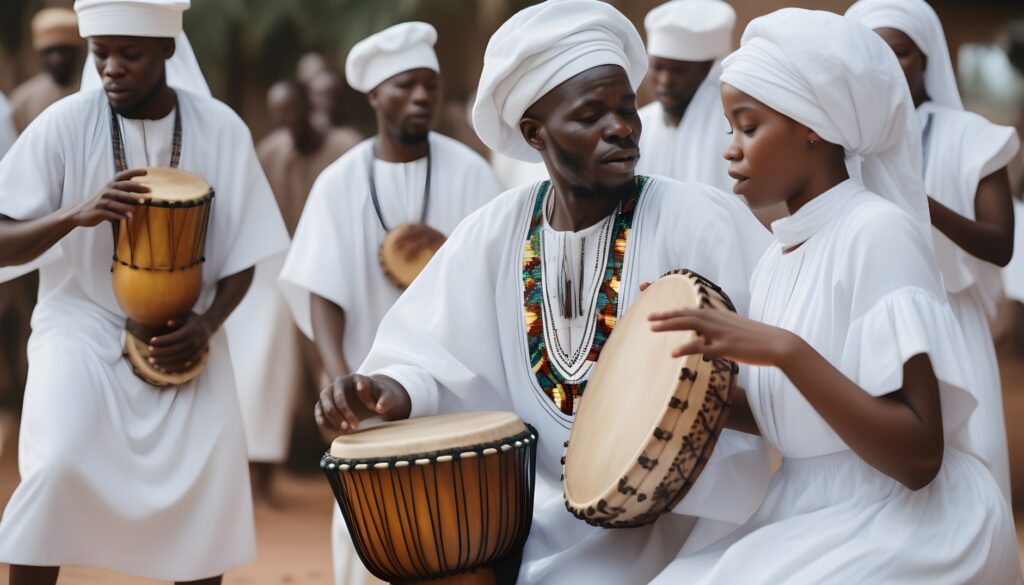
Gnawa music, a traditional genre from Morocco, is renowned for its unique blend of African, Arab, and Berber influences. This fusion creates a captivating sound that has captivated audiences around the world. The musical elements and techniques employed in Gnawa music play a crucial role in shaping its distinct character.
One of the defining features of Gnawa music is the use of specific instruments. Gnawa musicians often employ large drums, bass strings, and the guembri, a traditional three-stringed instrument. The guembri takes center stage as the primary instrument in Gnawa music, producing deep resonating tones that contribute to the hypnotic nature of the genre. Accompanying the guembri are other instruments like Qarqaba (metal castanets) and Tbel (large drum), each adding their own unique rhythmic and melodic elements to the overall composition.
The rhythmic patterns found in Gnawa music are another notable aspect. Trance-inducing rhythms create an entrancing atmosphere during performances. These rhythms feature complex polyrhythms and syncopated beats that give Gnawa its distinctive groove. The repetitive chants known as Lila further enhance this trance-like quality by weaving seamlessly with the intricate rhythms. As these chants are repeated throughout performances, they intensify the mesmerizing effect on both musicians and listeners alike.
Gnawas perform their music during rituals and dances as part of their spiritual practices. These rituals are deeply rooted in Moroccan culture and have been passed down through generations. The combination of music, dance, and spirituality creates a powerful experience that transcends mere entertainment. It serves as a medium for connecting with higher powers or achieving states of heightened consciousness.
While traditionally associated with spiritual ceremonies within Moroccan communities, Gnawa music has also gained recognition beyond its cultural origins. Contemporary musicians in Morocco and around the world have embraced this rich musical tradition, infusing it with various genres such as jazz, rock, and electronic music. This fusion has introduced Gnawa to new audiences worldwide and expanded its influence across different musical landscapes.
Rituals and Ceremonies in Gnawa Tradition
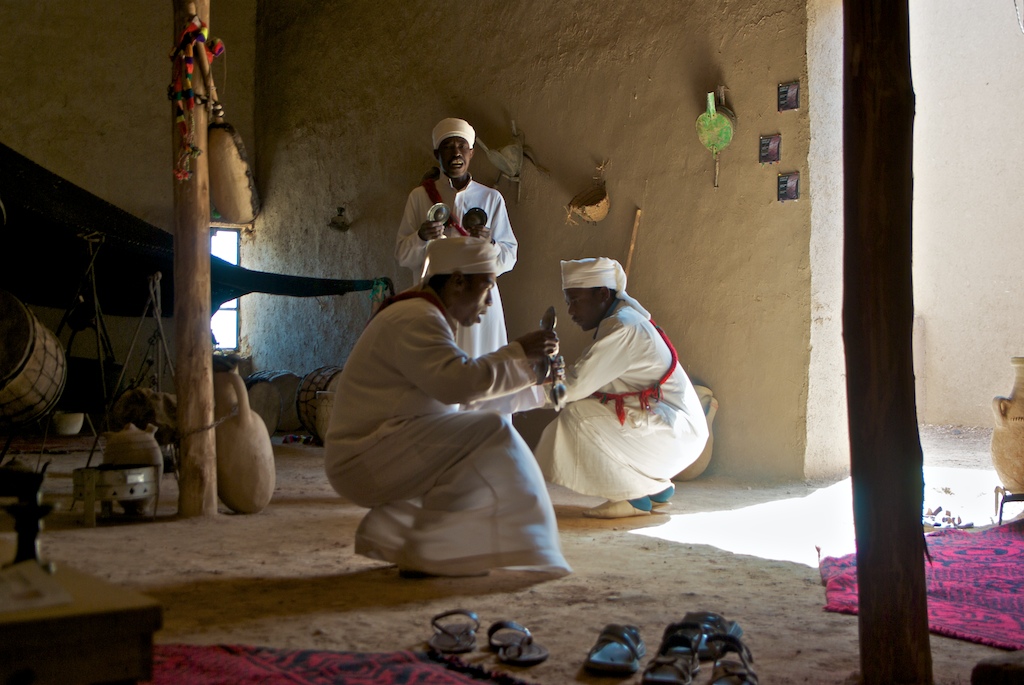
The Gnawa music tradition in Morocco is deeply rooted in rituals and ceremonies. These practices are integral to the Gnawa community, serving as a means of connecting with spirits and achieving a trance-like state during their performances.
One of the most renowned festivals that showcases the rich heritage of Gnawa music and its rituals is the Gnaoua World Music Festival. This annual event brings together musicians from around the world to celebrate this unique musical tradition. The festival provides a platform for both established artists and emerging talents to showcase their skills and pay homage to the Gnawa culture.
Central to these rituals are dances performed by the gnawas. These dances, known as “Hausa” involve intricate footwork, rhythmic movements, and gestures that carry deep symbolic meanings. Through these dances, participants express their devotion and connection with the spiritual realm.
In addition to dance, another essential element of Gnawa ceremonies is the use of traditional instruments such as the Ganga drum. The ganga drum plays a vital role in creating hypnotic rhythms that induce a trance-like state among participants. The repetitive beats produced by this instrument serve as a powerful tool for spiritual awakening and transcendence.
Trance and possession are integral aspects of Gnawa rituals. Through music, dance, and spiritual practices, participants enter altered states of consciousness where they may become vessels for spirits or ancestors. This belief in spirit possession allows individuals to connect with higher realms and seek guidance or healing.
Gnawa rituals are not only about spiritual connection but also have therapeutic properties. It is believed that participating in these ceremonies can provide relief from physical ailments as well as emotional or psychological distress. The music’s healing effects help participants find solace, release negative energies, and restore balance within themselves.
Symbolism plays a significant role in Gnawa’s performances, adding depth and meaning to their rituals. Colors used in costumes hold specific symbolism, with white representing purity and black symbolizing the connection with the spiritual realm. Movements, gestures, and intricate footwork also carry symbolic meanings, further enhancing the overall experience for both performers and the audience.
Maâlems and Their Legacy
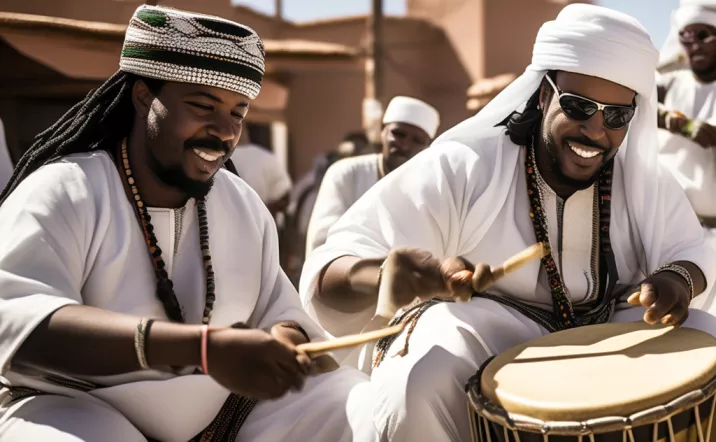
Maâlems, the master musicians of Morocco, play a vital role in preserving and transmitting the rich cultural heritage of Gnawa music. They are the torchbearers of this unique musical tradition that has deep roots in Moroccan society.
At the heart of Gnawa music are the Maâlems who lead the ceremonies and festivals where this captivating genre comes to life. Through their skillful performances, they invoke the spirits of saints, creating an atmosphere filled with mysticism and spirituality.
The possession rituals known as “Ganga” are central to the Gnawa tradition. These ceremonies attract people from all walks of life, uniting them in their shared love for this enchanting music. The Maâlems’ mastery over their instruments and their ability to connect with both the physical and spiritual realms make these rituals truly extraordinary experiences.
Notable masters have emerged within the realm of Gnawa music, leaving an indelible mark on its development and popularity. Among them is Maâlem Mahmoud Guinea, whose virtuosity on the guembri (a traditional three-stringed bass instrument) has earned him international recognition. Another respected figure is Maâlem Boubker Gnaoui, who has dedicated his life to teaching gnawa music to younger generations.
Maâlem Hamid El Kasri is yet another luminary in the world of gnawa music. His powerful vocals and mesmerizing performances have captivated audiences around the globe. These maestros have not only preserved but also elevated gnawa music to new heights through their talent and dedication.
The transmission of Gnawa knowledge occurs through a traditional master-disciple relationship. Disciples learn directly from experienced Maâlems through oral tradition and practical training. This apprenticeship ensures that Gnawa music’s authenticity remains intact as it is passed down from one generation to another.
The relationship between a maâlem (master) and disciple goes beyond mere instruction. It is a profound connection that encompasses mentorship, guidance, and spiritual growth. The disciple learns not only the technical aspects of playing the instruments but also the cultural significance and spiritual depth of Gnawa music.
Through this intimate relationship, disciples absorb not only the musical techniques but also the essence of Gnawa music. They learn to channel their emotions and connect with the spirits through their performances. This transmission process ensures that Gnawa music remains a living tradition, continually evolving while staying true to its roots.
Cultural Intersections and Influences
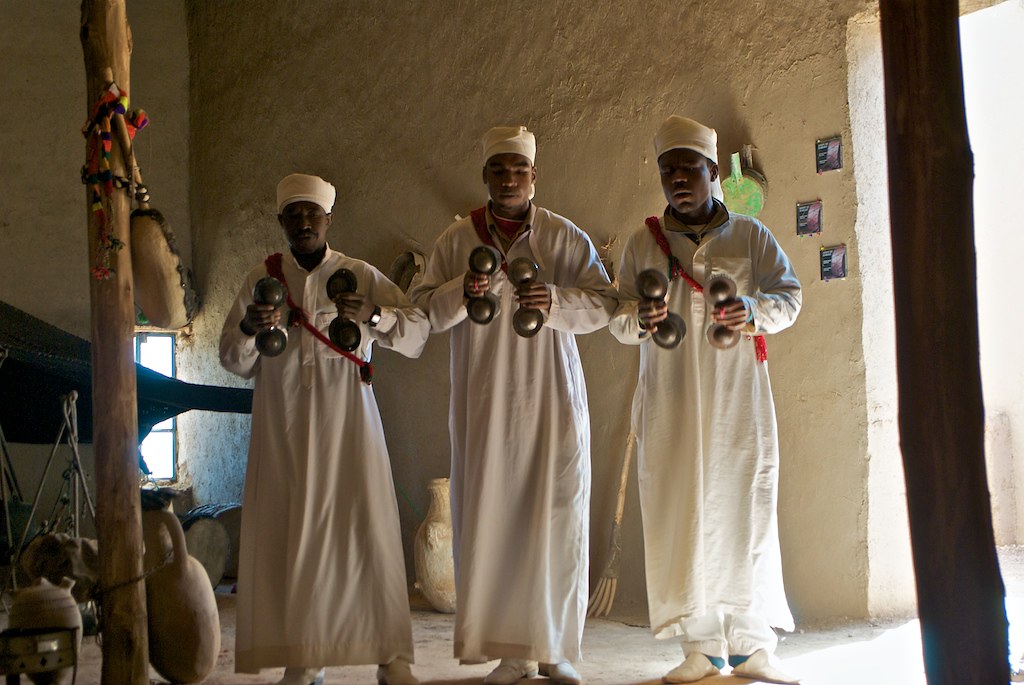
Gnawa music in Morocco is a vibrant expression of cultural intersections and influences from various entities. This unique genre of music has deep roots in Moroccan society and serves as a testament to the country’s rich heritage. Festivals and rituals play a significant role in preserving the intangible cultural heritage of Gnawa music, ensuring its continued existence for future generations to enjoy.
The performances and ceremonies associated with Gnawa music involve unique practices and communication methods. Participants in Gnawa music often wear specific clothing that represents their connection to the tradition. They engage in trance-like dances, adding to the overall interpretation of the music. These elements create an immersive experience for both performers and spectators, allowing them to connect with the spiritual essence of Gnawa.
Gnawa music reflects the fusion of African, Arab, and Berber cultural elements. It highlights the interconnectedness of these diverse influences in Moroccan society. The rhythmic beats, soulful melodies, and captivating lyrics draw from African musical traditions while incorporating Arab and Berber musical styles. This blending of cultures not only creates a distinctive sound but also serves as a bridge between different ethnic groups and cultural traditions.
Globalization has had a profound impact on Gnawa music, exposing it to a wider audience worldwide. Through international collaborations and performances, Gnawa musicians have been able to share their artistry with people from different parts of the world. As a result, this vibrant genre has gained popularity beyond Morocco’s borders.
However, there is an ongoing debate about preserving the authenticity of Gnawa music amidst globalization. While exposure to new audiences brings opportunities for growth and recognition, it also raises concerns about potential dilution or misrepresentation of this cherished tradition. Efforts are being made by artists, scholars, and cultural organizations to strike a balance between embracing global influences and safeguarding the integrity of Gnawa music.
Gnawa culture extends beyond music into visual arts, dance, and literature. Artists from various disciplines incorporate Gnawa themes, symbols, and aesthetics into their creations. This multidisciplinary approach enriches the overall artistic expression of Gnawa culture, providing a platform for diverse voices to contribute to its ongoing narrative.
Festivals and Events Celebrating Gnawa
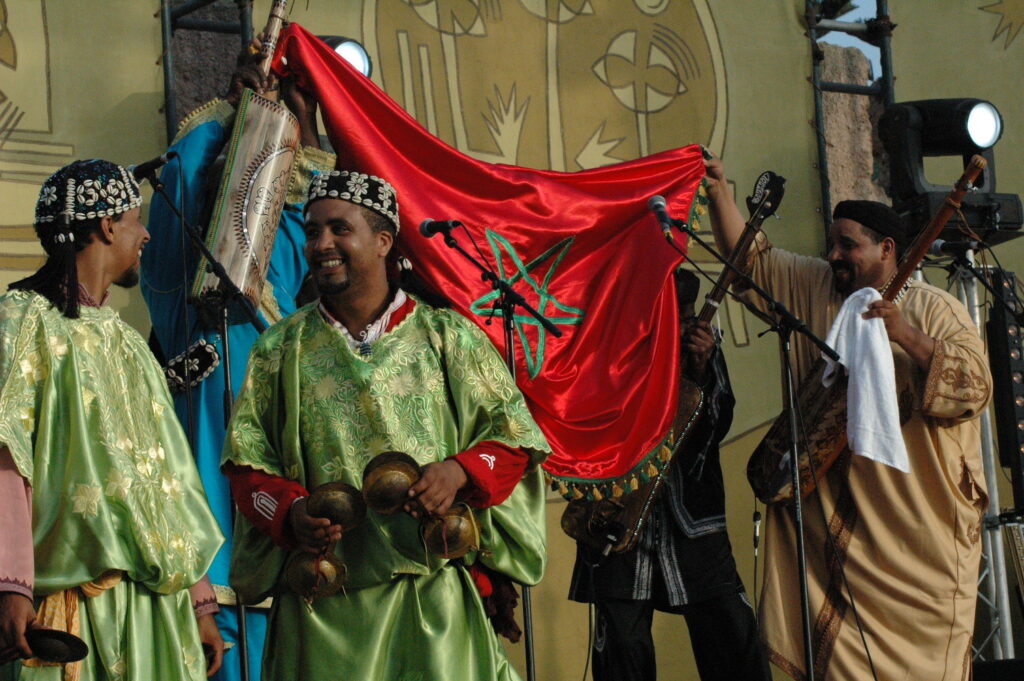
Morocco’s rich cultural heritage is celebrated through various festivals and events that showcase the vibrant tradition of Gnawa music and rituals. These festivals provide a platform for talented Gnawa musicians and dancers to captivate audiences with their captivating performances.
One of the most renowned events dedicated to Gnawa is the Gnaoua World Music Festival in Essaouira. This festival brings together both local and international artists who come together to celebrate and showcase the genre. The festival features an array of performances, workshops, and exhibitions that highlight the diversity and beauty of Gnawa music.
At these festivals, attendees have the opportunity to witness traditional ceremonies and dances that are an integral part of Gnawa culture. The mesmerizing trance-like state known as “Krakeb” is one such dance form that holds great significance in Gnawa rituals. Participants engage in rhythmic movements accompanied by the distinctive sound of Krakeb castanets, creating an immersive experience for all.
These festivals play a crucial role in preserving and promoting the intangible cultural heritage of Gnawa music in Morocco. They serve as platforms for artists to pass down their knowledge, skills, and traditions to future generations. By showcasing the beauty and significance of Gnawa music, these events contribute to its continued vitality.
In addition to festivals, various organizations and initiatives work tirelessly towards preserving and safeguarding Gnawa heritage. These efforts include documentation, archiving, education programs, as well as support for Gnawi communities. By documenting the history, rituals, and musical techniques associated with gnawa music, researchers ensure that this valuable cultural heritage is not lost over time.
Education programs focused on Gnawi traditions help raise awareness among younger generations about their cultural roots while providing opportunities for learning traditional instruments such as guembri (a three-stringed lute). Support for Gnawi communities ensures that they can continue practicing their art form while also improving their socio-economic conditions.
Through these preservation efforts, Gnawa music remains a vibrant part of Morocco’s cultural landscape. The dedication and passion of individuals and organizations involved in the preservation of Gnawa heritage contribute to its enduring presence in contemporary Moroccan society.
Regional Styles and Global Resonance
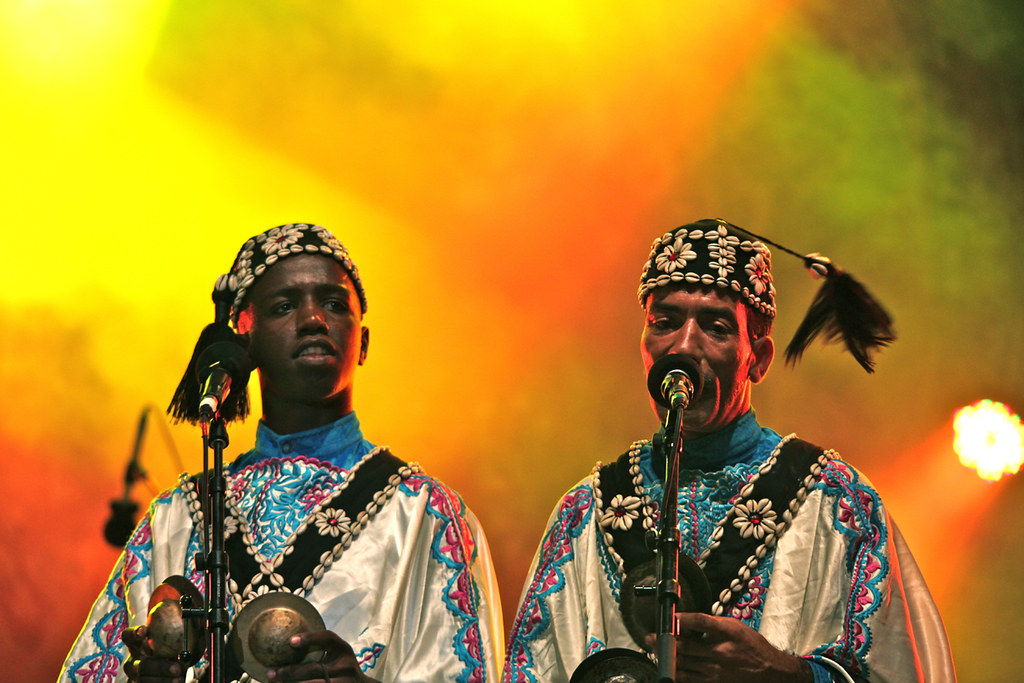
Comparing Different Gnawi Styles
Different regions in Morocco have distinct styles within the broader Gnawa genre. Essaouira, Marrakech, and Fes each have their own unique interpretations of Gnawa music.
In Essaouira, the Gnawa music style is characterized by its fusion with other genres such as jazz and blues. The city’s annual Gnawa World Music Festival showcases this vibrant blend of musical influences. Musicians from around the world come together to celebrate the rich cultural heritage of Gnawa music, creating a dynamic and diverse atmosphere.
Marrakech, on the other hand, has a more traditional approach to Gnawa music. Performances often take place in intimate settings like riads or small venues where musicians connect with their audience on a deeper level. The rhythm-driven melodies and hypnotic chants create an immersive experience that transports listeners into a trance-like state.
Fes is known for its religious significance in relation to Gnawa music. The city hosts regular festivals where groups of musicians gather to perform spiritual rituals accompanied by captivating dances and songs. These performances serve as a form of communication with spirits and are deeply rooted in ancient practices.
Exploring these regional variations provides a deeper understanding of the diversity within the genre. Each style offers a unique perspective on Gnawa music, showcasing how it has evolved over time while remaining true to its cultural origins.
Technology’s Role in Spreading Gnawa Music
The advent of technology has facilitated the dissemination of Gnawa music globally. Online platforms, social media, and streaming services have made it more accessible to a wider audience.
Artists can now connect with fans from all over the world through platforms like YouTube and SoundCloud, sharing their music beyond geographical boundaries. This newfound connectivity allows for collaborations between musicians from different cultures who share a passion for Gnawa music.
Furthermore, social media platforms provide spaces for Gnawa music enthusiasts to come together, share their experiences, and discover new artists. Facebook groups and Instagram pages dedicated to Gnawa music foster a sense of community among fans and musicians alike.
Streaming services like Spotify and Apple Music have also played a significant role in spreading the global resonance of Gnawa music. These platforms make it easy for listeners to explore different styles within the genre, discover emerging artists, and create personalized playlists.
The accessibility provided by technology has not only expanded the reach of Gnawa music but has also allowed for its preservation as an intangible cultural heritage. By making it readily available to a global audience, technology ensures that this rich musical tradition continues to thrive and evolve.
Social Aspects and Storytelling in Gnawa
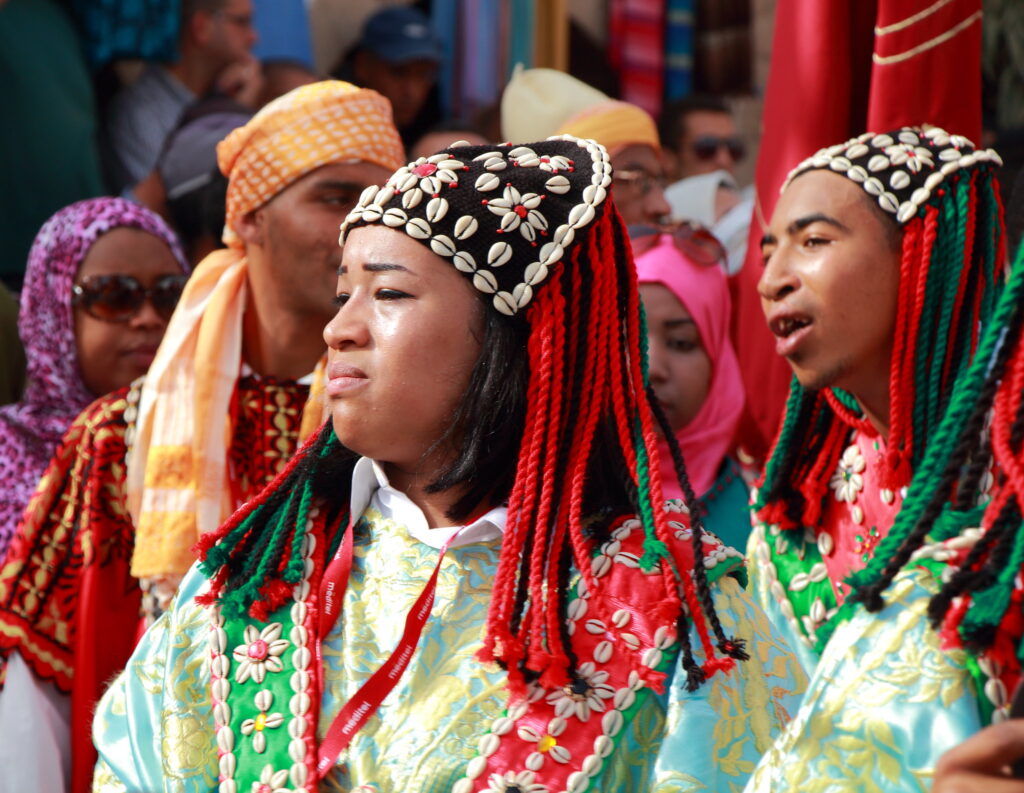
Gnawa music holds a significant place in Moroccan culture, with deep roots that trace back to the country’s history and heritage. It is not just a form of entertainment but also acts as a powerful means of communication, bringing people together through its rhythmic beats and captivating melodies.
One of the most fascinating aspects of Gnawa music is its ability to tell stories. The gnawas, who are the practitioners of this musical tradition, use their music as a medium to pass down traditions and preserve their intangible cultural heritage. Through their songs, they convey tales of historical events, spiritual journeys, and personal experiences.
Festivals and rituals play an essential role in showcasing the rich cultural tapestry of Gnawa music. These events provide a platform for the gnawas to demonstrate their unique dances, performances, and rituals. One such festival is the Gnaoua World Music Festival held annually in Essaouira, Morocco. This festival attracts both local and international audiences who come together to celebrate the vibrant spirit of Gnawa music.
Social Status of Gnawas in Moroccan Society
Historically marginalized, Gnawas have faced discrimination and social stigma due to their African origins and association with spiritual practices. However, there has been a gradual shift in perceptions towards them. Their cultural contributions and artistic achievements have gained recognition and respect within Moroccan society.
Efforts are being made to challenge stereotypes surrounding Gnawas and promote inclusivity. Organizations such as “Initiative Gnaoua” aim to create awareness about Gnawa culture through educational programs and initiatives that highlight the positive impact they have on Moroccan society.
Role of Women in the Gnawi World
While traditionally male-dominated, women are increasingly playing significant roles within the realm of Gnawa music. Female musicians, singers, and dancers are breaking barriers by challenging gender norms prevalent within this musical tradition.
Their presence adds new perspectives and narratives to the evolving landscape of Gnawa culture. Women are not only contributing to the music but also actively participating in rituals and ceremonies. Their involvement highlights the inclusive nature of Gnawa music, empowering women to express themselves and contribute to the preservation of their cultural heritage.
Storytelling Through Song
Gnawa songs have a profound storytelling element that captivates listeners. The lyrics convey deep emotions, wisdom, and messages of resilience. They serve as a vessel for passing down oral history and preserving cultural knowledge.
Through their music, gnawas create a sense of belonging and identity within their community. The storytelling aspect enhances the narrative power of Gnawa music, allowing people to connect with their roots, understand their history, and appreciate the beauty of this rich musical tradition.
Conclusion
In conclusion, the exploration of Gnawa music in Morocco has revealed a rich and vibrant tradition deeply rooted in the country’s history and culture. From its origins as a spiritual practice among enslaved Africans to its evolution into a musical genre celebrated worldwide, Gnawa has become a symbol of resilience, identity, and interconnectedness. The rhythmic beats, hypnotic melodies, and trance-inducing rituals showcased the unique musical elements and techniques that define this genre. Furthermore, the role of Maâlems in preserving and passing down this legacy was highlighted, emphasizing their invaluable contribution to the preservation and evolution of Gnawa music.
The intersections between Gnawa and other cultures were also explored, showcasing how this music has transcended boundaries and influenced diverse artistic expressions. The festivals and events dedicated to celebrating Gnawa provided opportunities for cultural exchange and appreciation. Moreover, the social aspects and storytelling inherent in Gnawa shed light on its transformative power as a medium for healing, community-building, and self-expression.
To delve deeper into the world of Gnawa music, readers are encouraged to attend live performances, participate in workshops, or seek out recordings by renowned Maâlems. By engaging with this vibrant tradition personally, one can gain a more profound understanding of the cultural significance and artistic brilliance of Gnawa music.
Frequently Asked Questions
Gnawa music is a traditional genre that originated in Morocco, characterized by its unique blend of African rhythms and Islamic spiritual chants. It has a rich history rooted in the sub-Saharan region and has evolved over time through cultural exchanges with various communities.
Gnawa music traces its origins back to the descendants of enslaved Africans who were brought to Morocco centuries ago. These individuals preserved their African musical traditions while incorporating elements of Islamic spirituality. Over time, Gnawa developed into a distinct genre, blending African rhythms with Moroccan influences.
Gnawa music incorporates various instruments such as the guembri (a three-stringed lute), Qraqeb (metal castanets), and Tbel (drum). The rhythmic patterns created by these instruments form the backbone of Gnawa music. Call-and-response vocals, improvisation, and trance-inducing melodies are essential components of this captivating musical style.
Yes, rituals and ceremonies play an integral role in the Gnawa tradition. These events often involve spiritual healing practices led by Maâlems (master musicians) who guide participants through trance-like states using repetitive rhythms and incantations. The purpose is to connect with spiritual entities known as jinn and seek healing for various ailments.
Gnawa has had significant cultural intersections with diverse communities throughout history. Its influence can be seen in other genres such as jazz, blues, reggae, and fusion styles worldwide. This cross-pollination has resulted in collaborations between Gnawa musicians and artists from different backgrounds, contributing to the global resonance of this captivating musical tradition.

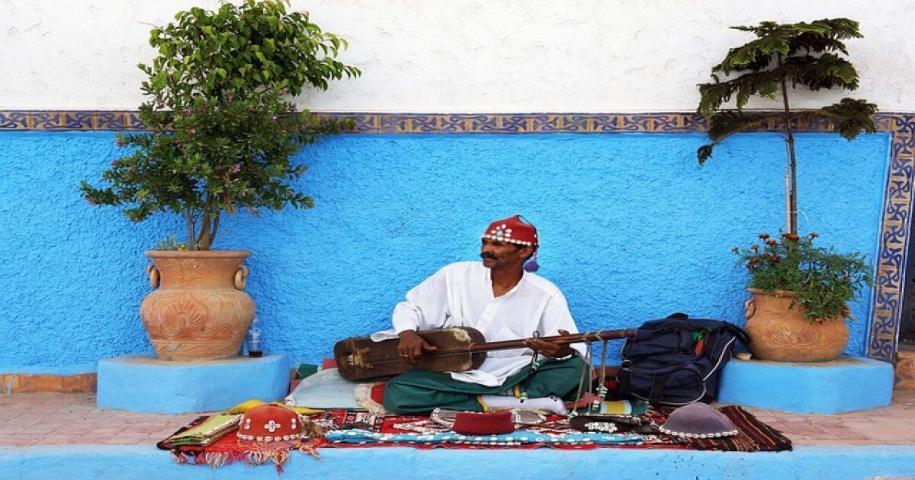
Leave a Reply